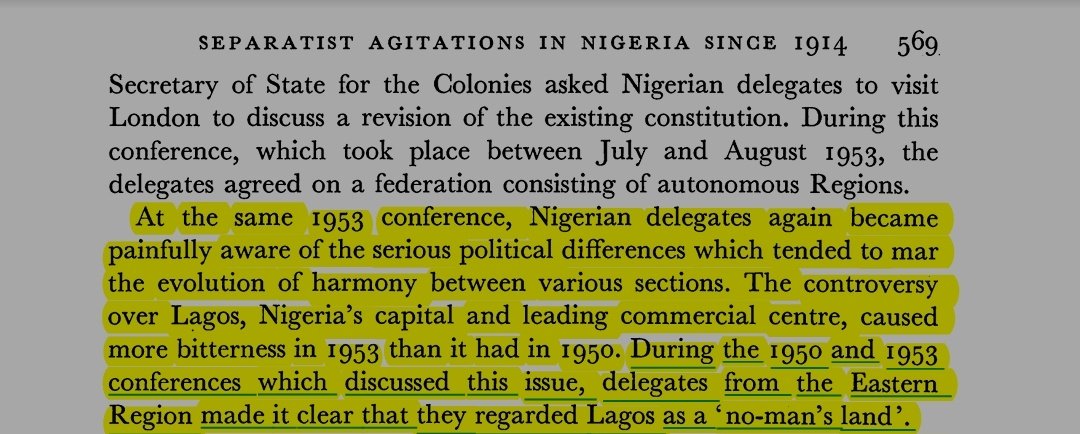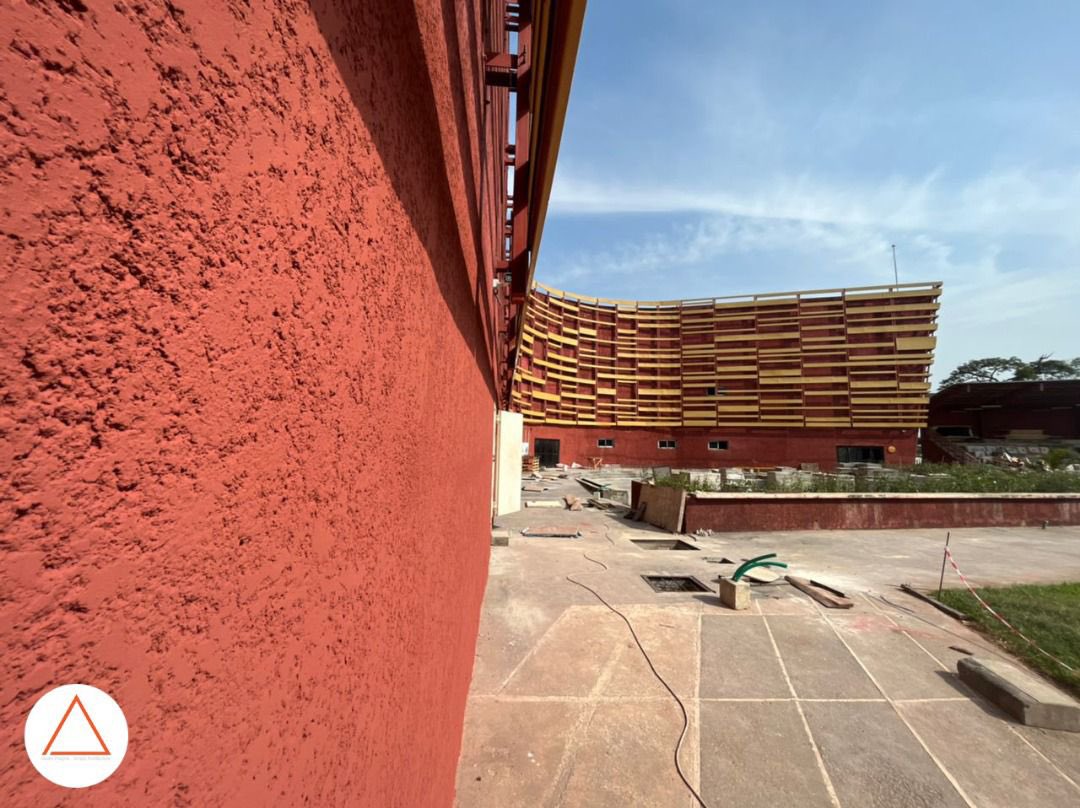
#Yoruba #History #ObafemiAwolowo #Lagos #Nigeria
"HISTORY of the term "No Man's Land" tag on LAGOS".
SOURCE: Separatist Agitations in Nigeria since 1914,pg 569
A THREAD from the excerpt below 👇
At the same I953 conference, Nigerian delegates again became painfully aware of the

"HISTORY of the term "No Man's Land" tag on LAGOS".
SOURCE: Separatist Agitations in Nigeria since 1914,pg 569
A THREAD from the excerpt below 👇
At the same I953 conference, Nigerian delegates again became painfully aware of the


serious political differences which tended to mar the evolution of harmony between various sections. The controversy over Lagos, Nigeria's capital and leading commercial centre, caused more bitterness in I953 than it had in 1950. During the 1950 and 1953 conferences which 

discussed this issue, delegates from the Eastern Region made it clear that they regarded Lagos as a 'no-man's land'.
The Western delegates, however, regarded Lagos as a Yorùbá town which they wanted to administer on their own terms. During the 1950 General Conference, the
The Western delegates, however, regarded Lagos as a Yorùbá town which they wanted to administer on their own terms. During the 1950 General Conference, the

Northern delegates, who held the balance, had also agreed that Lagos Municipality and the Colony districts should be merged with the Western Region for administrative purposes. During the I953 Conference, however, the Northern delegates re-examined their stand, as they and
the other delegates had recommended greater regional autonomy under a federal constitution. The Northern leaders in I953 feared that whoever administered Lagos would control, and per- haps deny them, their key outlet at Apapa, then considered more important than Port Harcourt.
During the 1953 Conference, the Action Group delegation led by Obafemi Awolowo emphasised the historical connexions between Lagos and Yorùbáland. "Awolowo expressed willingness to allow the Western Region to contribute towards the cost of building a new capital else- where,
provided that Lagos and the Colony districts would continue to be administered by his Region"
Oliver Lyttelton, the Secretary of State at the time, in consideration of the over-all interests of Nigeria, decided, when approached by the Nigerian delegates, that Lagos should be the
Oliver Lyttelton, the Secretary of State at the time, in consideration of the over-all interests of Nigeria, decided, when approached by the Nigerian delegates, that Lagos should be the
regarded as 'Federal Territory'. He thought that, though his decision would be disagreeable to the Action Group, it would 'make for a United Nigeria'.
In October I953 the Action Group (A.G.) and its supporters, including the Egbe Omo Odùduwà (a cultural-cum-political organisation
In October I953 the Action Group (A.G.) and its supporters, including the Egbe Omo Odùduwà (a cultural-cum-political organisation
named after Odùduwà, the mythical ancestor of the Yorubas), reacted sharply by reopening the question of Lagos. At about the same time, Obafemi Awolowo, the Premier of the Western Region, sent the Secretary of State a strongly worded cable concerning this subject.
In this
In this
communication, Awolowo claimed, among other things, the freedom of the Western Region 'to decide whether or not they will remain in the proposed Nigerian Federation'. Since Awolowo's cable was published, so was the Secretary of State's reply, as follows: 'The Secretary of State
has directed that you should be informed that any attempt to secure alteration of that decision by force will be resisted, and in this context, I am to observe that any attempt to secure the secession of the Western Region from the Federation would be regarded as the use of force
.'
The National Council of Nigeria and the Cameroons (N.C.N.C.), then led by Nnamdi Azikiwe and others, gleefully observed that the Secretary of State had addressed the A.G. in the only language that the latter could understand.
End.
The National Council of Nigeria and the Cameroons (N.C.N.C.), then led by Nnamdi Azikiwe and others, gleefully observed that the Secretary of State had addressed the A.G. in the only language that the latter could understand.
End.
From the above, we could see the origin of when Lagos started to be tagged 'No man's Land' and Obafemi Awolowo argument against Lagos being made the Capital of NIGERIA, he never wanted Lagos to be capital and in fact, promised that elsewhere would be funded by Western Region
, he also threatened that Western Region would 'Secede' but was bullied and threatened by Oliver Lyttleton.
It should also be noted that this Lagos that became Capital of NIGERIA was only "27 Area Sq.Mi" of the modern Lagos State which is "1,381 mi²", because other part was
It should also be noted that this Lagos that became Capital of NIGERIA was only "27 Area Sq.Mi" of the modern Lagos State which is "1,381 mi²", because other part was

Part of Western Region at large.
• • •
Missing some Tweet in this thread? You can try to
force a refresh




































